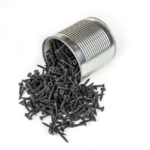The two most common causes of drywall seams cracking are inadequate support behind the drywall and improper taping.
We’re going to dive into those two pesky reasons for drywall cracks, and how to fix them.
And a whole lot more.
Unfortunately, you’ll never know exactly why your drywall seams are cracking until you cut into the wall and see for yourself.
While cutting into your wall might seem like a terrifying thing to do, you won’t know how to fix drywall cracks until you tear into it.
So grab your drywall knife, a dropcloth, shop vac, and let’s fix that crack!
Reasons Why Drywall Seams Crack
There are several reasons why drywall seams crack, so let’s get every possibility out there in the open, so we can prepare ourselves for what we might encounter behind that drywall.
- Uneven, loose, and missing framing / no backing or missing screws at the drywall seam.
- Improper taping, missing joint compound under paper or mesh tape.
- High humidity, or drastic temperature changes.
- Water leaks behind drywall.
- Building shifting, natural settling, or foundation problems.
Don’t panic. This is a long list of possible issues, but you’ll never know until you dive in.
Let’s start with the easiest fix and move our way down the list to the most serious.
Hopefully, it’s just a missing screw or two – let’s find out.
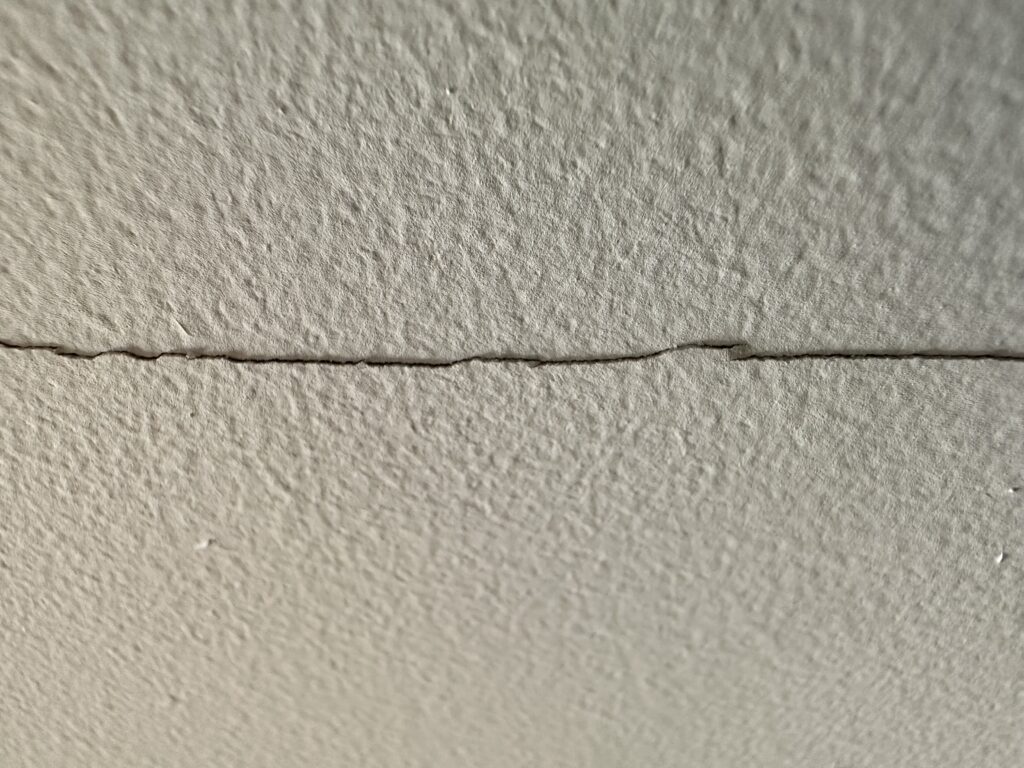
How To Fix Cracks in Drywall
Drywall issues are always a crap shoot from the start.
Almost any repair project can go from a 30-minute job, or grow into a month-long drywall drama of titanic proportions.
Problem #1 – Uneven Framing, No Backing, or Missing Screws
Hopefully, this is your problem with drywall seams cracking.
It’s usually the easiest to fix. You’ll still need to cut away the cracked drywall seam, but after that, it’s usually a breeze.
Push each side of the drywall along the crack. If you see the drywall move in and out, or separate, you’ll need to fasten the drywall to solid framing.
- Cut away the cracked drywall taping, and remove the old joint compound. Remove any loose screw or nail along the cracked seam.
- Add new drywall screws along the joint and be sure the screws are going into solid backing.
- Snug drywall screws so the screw head is just below the wall surface. Assure drywall joints are completely fastened and snug with no movement.
- Add quick-set Durabond to the area that was cut away as a filling coat. Let dry completely.
- Apply new joint compound or Durabond (depending on how large the seam crack is) and paper tape over the fill coat. Let dry completely.
- Apply additional coats of joint compound over the paper tape and let dry.
- It might take yet another coat of compound. Once dry, lightly sand and paint patch.
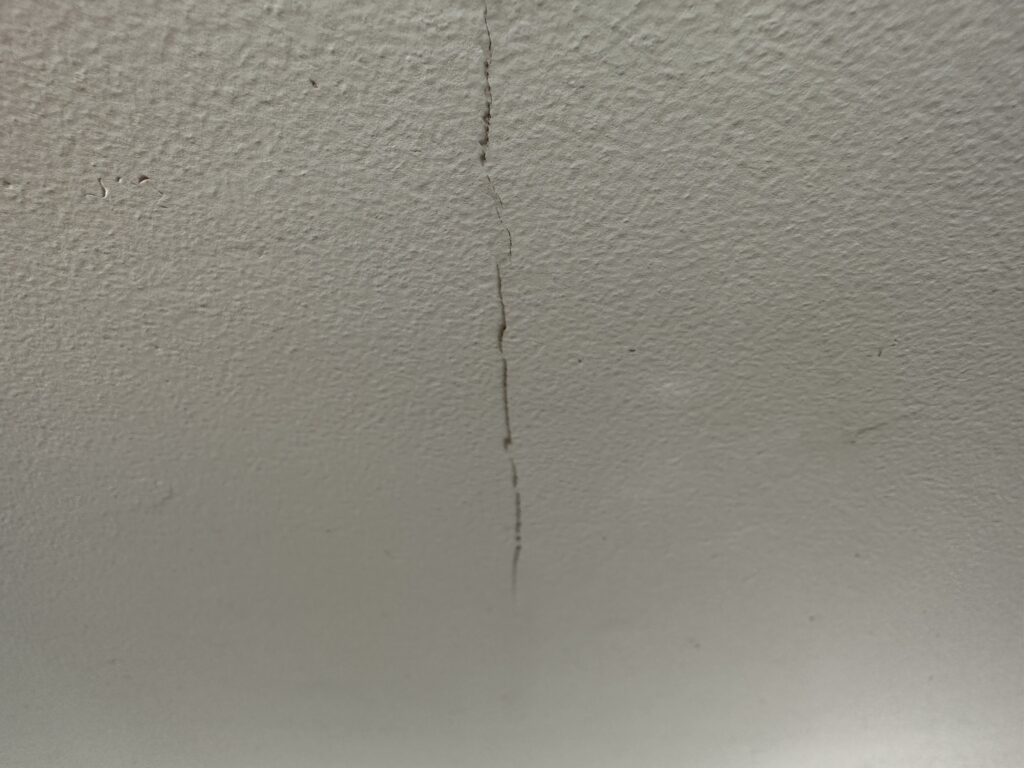
Problem #2 – Improper Taping Under Joint Tape
Once you cut away the joint tape at a cracking drywall seam, you might find joint tape that was not properly bedded in the drywall compound.
Usually, this is marked by a bubble or air pocket, where the paper tape will stick out. Air pockets are also perfect places for cracks to appear at drywall seams.
To fix this common issue, you’ll need to cut away the drywall paper or mesh tape, and properly bed new tape in the drywall mud at the entire seam.
While this is a fairly simple fix in one small area, I’ve seen instances where the paper tape was not bedded properly over huge areas of the project.
It’s almost easier to start over at this point. Regardless, you’ll need to cut away every bit of improperly bedded tape and apply filler mud, and of course, new tape that’s fully bedded to joint compound.
Problem #3 – High Humidity or Drastic Temperature Changes
We now know temperature changes cause cracking in drywall under certain conditions. But humidity can be the real source of problems.
Several studies have concluded high humidity, and the change in humidity levels cause building materials to grow and shrink.
When wood framing behind the drywall expands and contracts, it causes cracking. The drywall sheets also expand and contract when humidity levels change.
You can reduce wood and drywall movement by acclimating building materials to the environment for at least 24 hours before installing them.
By pre-conditioning the interior temperature and humidity levels before hanging new wallboard, you can reduce the risk of cracks appearing.
But the most effective way to reduce drywall seams cracking from humidity-induced expansion and contraction is to use resilient channel between the framing and drywall.
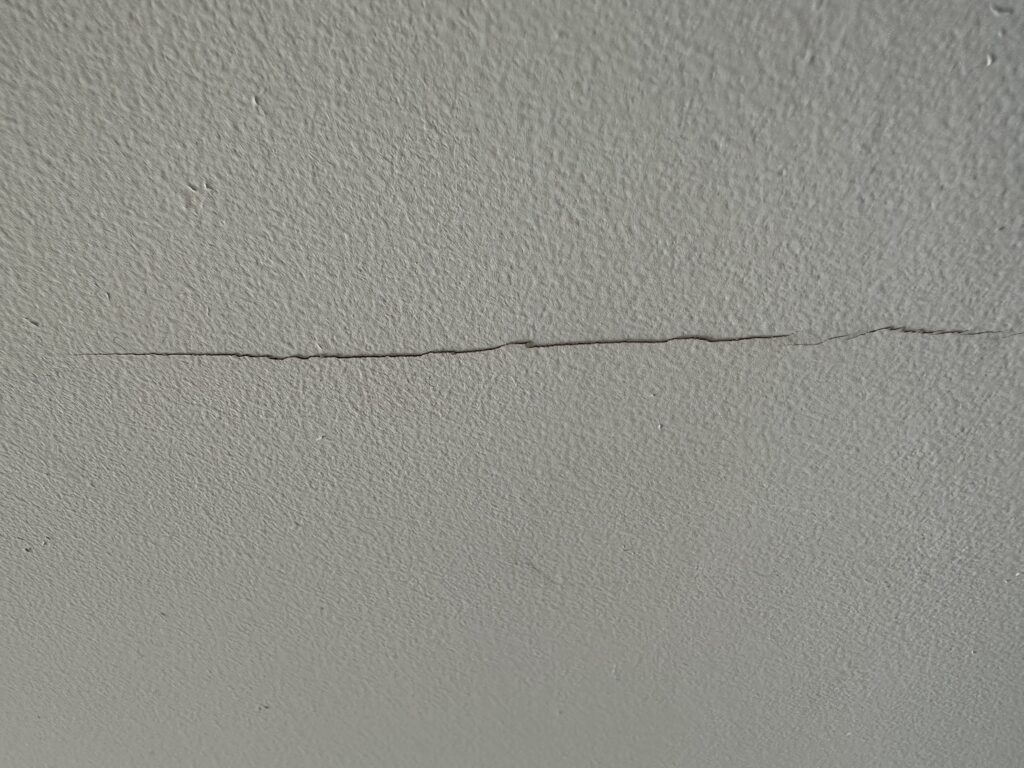
Problem #4 – Water Leaks Behind Drywall
Drywall seams crack when water leaks inside the wall or ceiling cavity.
Water travels down the back of the drywall sheet, finds its way through the joints, and seeps through, creating cracks in the joint compound.
In my experience, a water leak will not only crack the drywall but also leave discoloration around the crack.
Your first task, and most important, is to find where the water is coming from.
Usually, water leaks don’t just go away if you ignore them. They get worse.
Cracking drywall seams from a water leak can be a blessing in disguise. Always look on the bright side.
This is your chance to identify a plumbing issue or another serious problem before it gets out of hand.
Don’t wait. Find the source of the moisture or water leak. Get it fixed.
Then, of course, patch back the drywall. But that is usually the easy part.
Problem #5 – Building Shifting and Foundation Issues
Natural settling occurs in most newly constructed homes, but it shouldn’t crack your drywall – too much.
If it does, you might have a foundation issue.
Depending on the severity of the cracks, you may need to hire a structural engineer to inspect your home.
Diagonal or jagged cracks in drywall are a sign of building movement, shifting, and potential foundation problems.
Get to the source of your foundation problems before you begin patching drywall cracks.
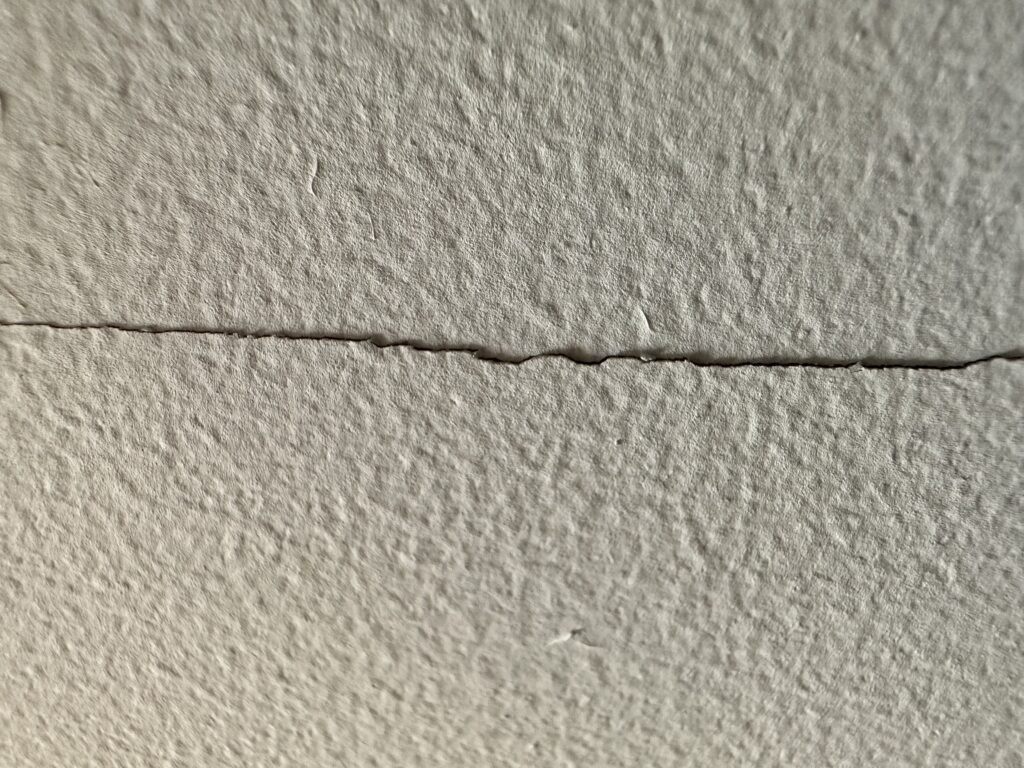
How To Prevent Drywall Seam Cracking
Are you ready to hang drywall, but need a few quick tips on how to prevent your future drywall from cracking?
Here are a few ideas to help –
- Place butt joints over openings in doors and windows whenever possible. It will reduce the amount of butt joints – and will make taping easier.
- Leave a 1/8 inch space between butt joints. Building material, yes, even drywall, expands and contracts while it acclimates to changing temperatures and humidity.
- Stagger the drywall joints – this is a no-brainer, but sometimes overlooked for new drywall hangers just starting out. Butt joints should never line up on the same stud. Stagger!
- Double-check for solid wood backing at the butt joints of all drywall.
- Use the proper drywall screws, and be sure to sink your screws to the proper depth. Fundamentals!
- Allow drywall to sit inside the building for at least 24 hours before hanging so it can acclimate to the environment. This tip is followed religiously for hardwood floors, why not for drywall?!
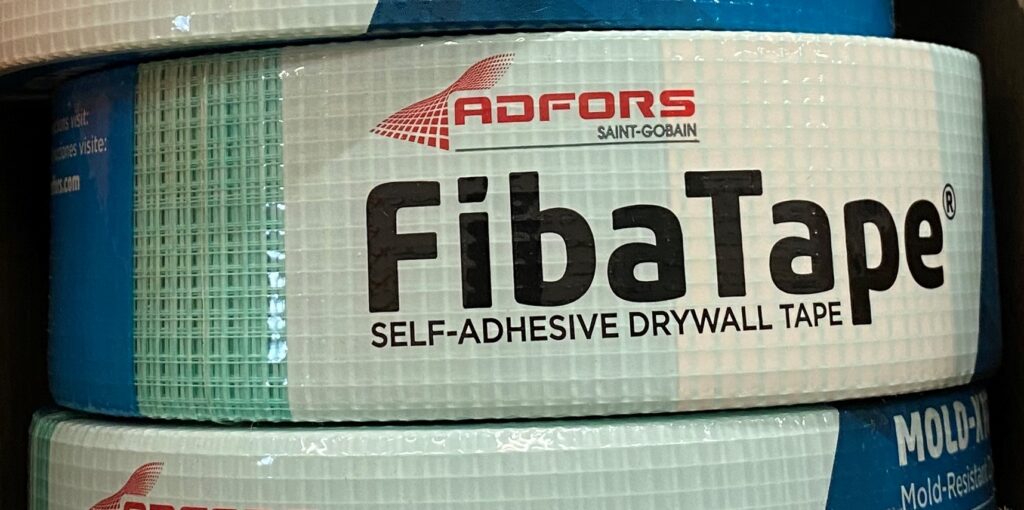
How To Keep Cracks in Drywall From Coming Back
Nobody wants to fix the same problem twice. That’s a real drag.
The best way to keep drywall cracks from coming back is to determine the root cause the first time.
It’s truly amazing how many people might try to “mud over” a drywall crack five times without actually knowing why the cracks are occurring.
I have some bad news for you.
Unless you can get to the root cause of the crack and solve the issue, the drywall crack is coming back, guaranteed.
Do Drywall Cracks Mean Foundation Problems?
Drywall cracks don’t always equal foundation problems. Sometimes the stress of a shifting foundation will crack drywall, but that’s not always the cause of cracks.
Drywall cracks could mean your house foundation is falling apart and crumbling, but that’s not always the answer. Let’s not jump to conclusions.
Drywall seam cracks can sometimes be as simple as a few loose screws, or a small air bubble behind the tape.
Let me give you a new way to look at a drywall seam crack.
The next time you spot a drywall crack, don’t turn your head away in disgust.
The drywall crack is an opportunity in disguise. This is your chance to solve a problem in the wall that needs attention before it gets worse.
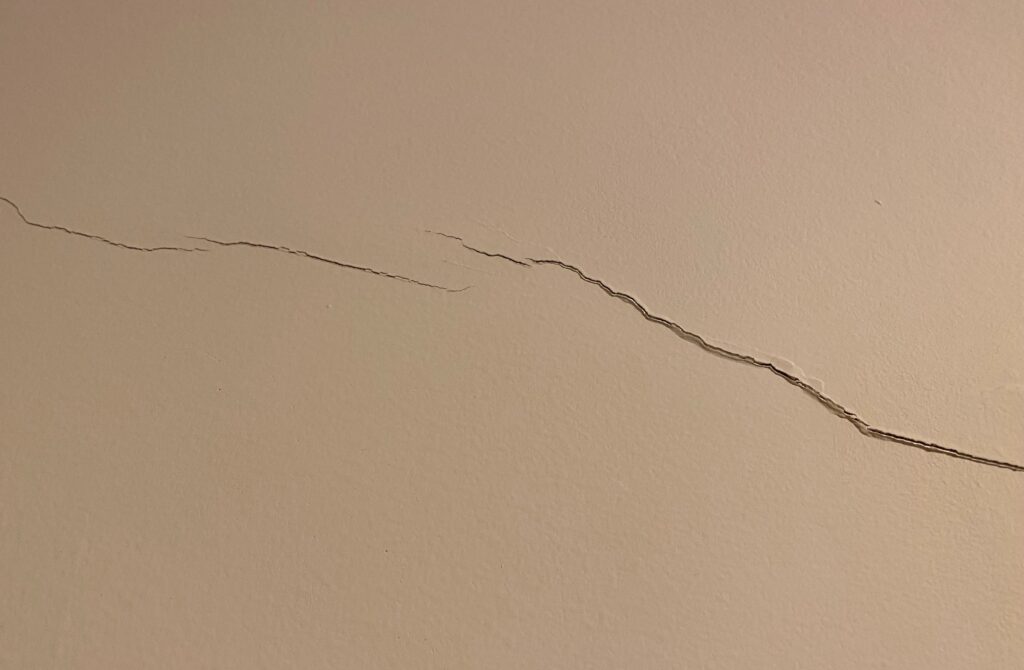
Can New Homes Have Drywall Seams Cracking?
As new homes settle over time, homeowners may notice sheetrock cracks appearing on the walls.
While this is a natural part of the settling process, it can be disconcerting when you first move into a new house and see these blemishes popping up.
If you do have drywall cracks in the walls and ceilings of your new home, don’t panic! Just begin investigating the root cause of the problem.
Usually, the builder of your new home will fix drywall cracks. Good contractors understand they must service their product promptly, within the time frame and terms of the home warranty agreement, of course.
It might just take a small dap of putty, or it could be a large repair project. If you’re still under warranty, let the professionals handle it.
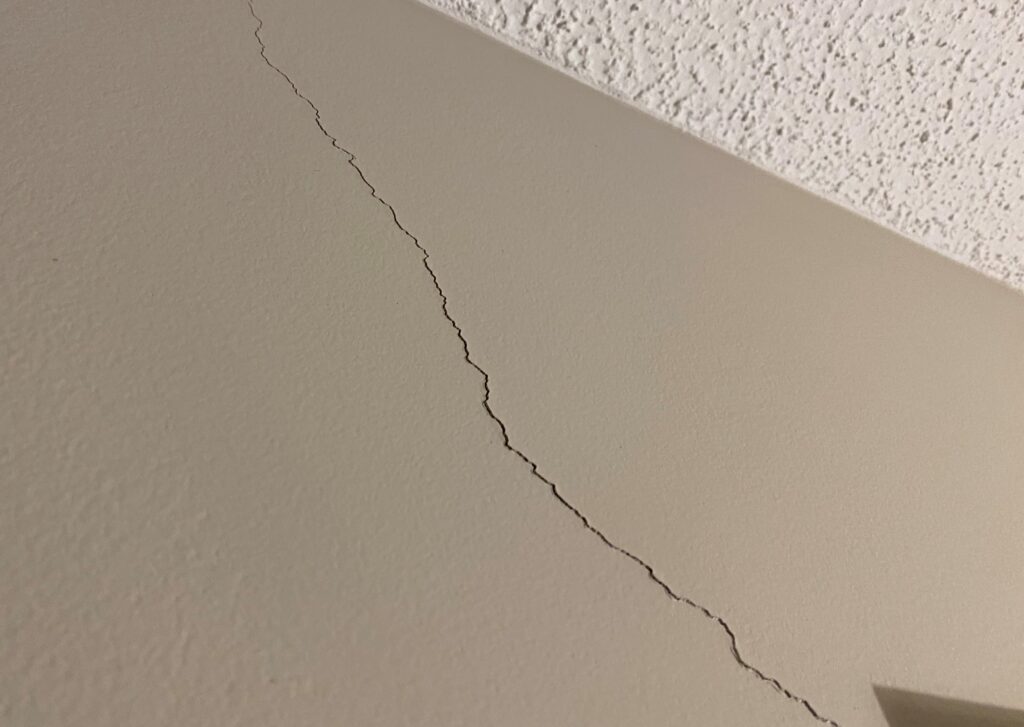
Can Leaks and Water Damage Cause Drywall Seams To Crack?
Yes, water leaks will cause drywall seams to crack, and that might be the least of your problems.
Usually, small water leaks turn into big water leaks if they are not dealt with and fixed.
Remove the water-damaged drywall, fix the plumbing and water leaks, and install new drywall.
This is your only choice. Don’t ignore it any longer.
Will a Vacant Home Have Drywall Seams Cracking?
Vacant homes are especially vulnerable to drywall seams cracking, among other things. The stresses of building materials, lumber, and drywall expanding and contracting can cause nail and screw pops.
Temperature fluctuations and humidity changes can cause drywall seams to crack.
A vacant home usually has wider swings in temperature and building materials, placing the drywall and the wood it’s attached to, to expand and contract.
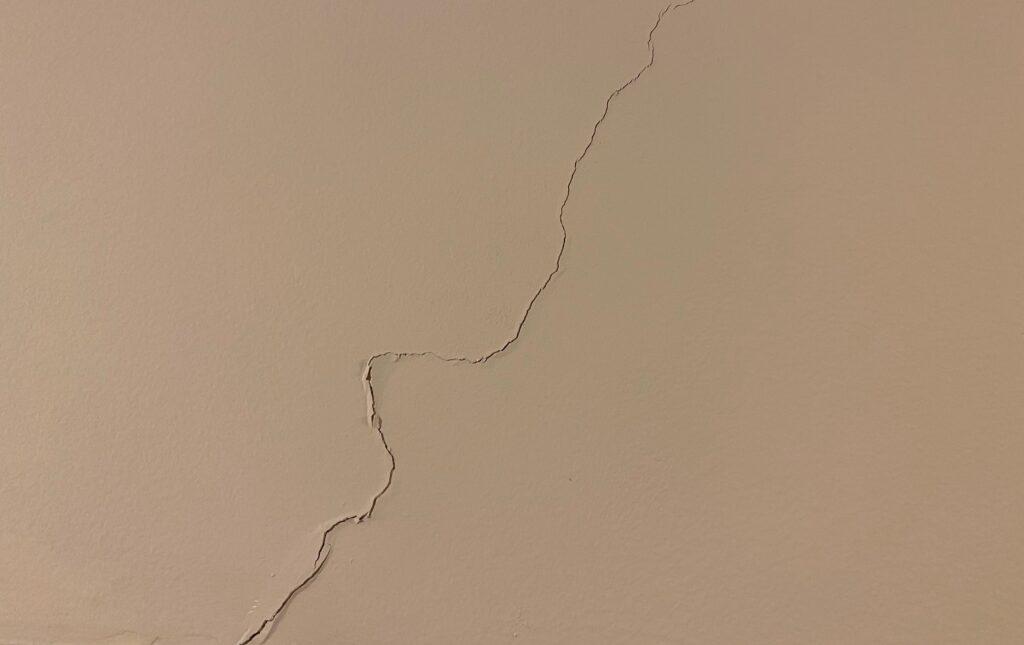
Additional Resources –
Current Drywall Repair Pricing – Amazon
Current Drywall Repair Pricing – Home Depot

